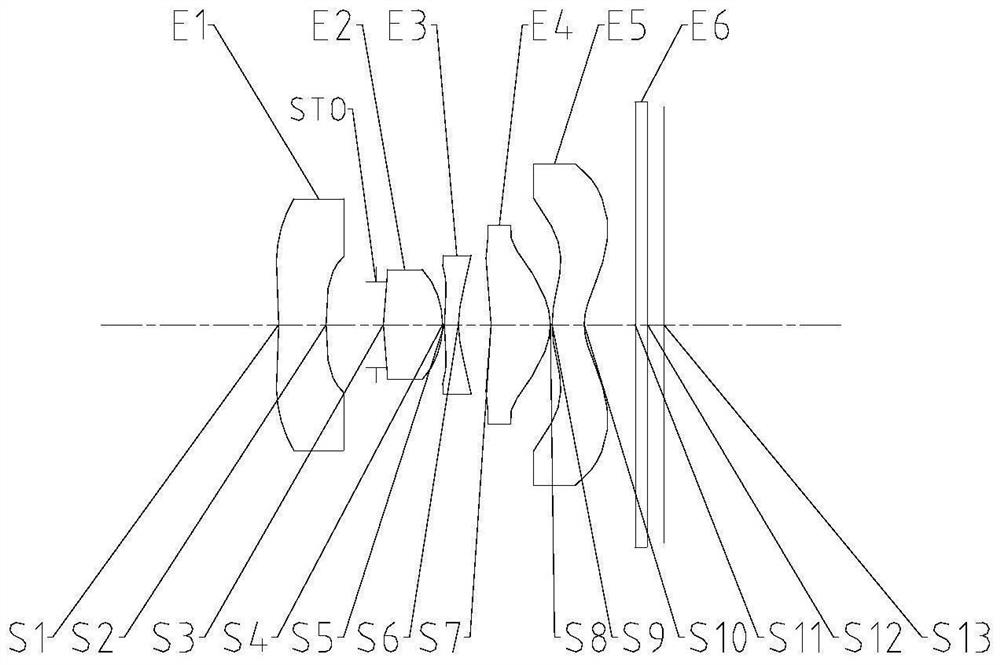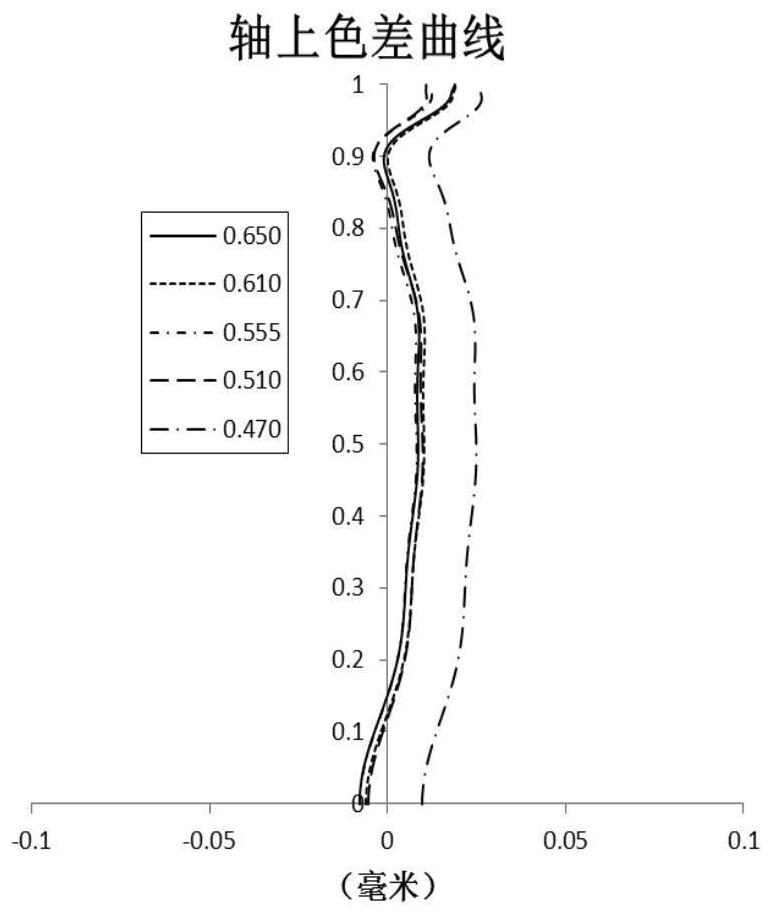Camera lens
A camera lens and lens technology, applied in the field of camera lenses, can solve the problems of large aperture, ultra-wide-angle and high-pixels that are difficult to realize at the same time
- Summary
- Abstract
- Description
- Claims
- Application Information
AI Technical Summary
Problems solved by technology
Method used
Image
Examples
Embodiment 1
[0051] Such as Figure 1 to Figure 30 As shown, the camera lens includes a first lens with negative refractive power, a second lens with positive refractive power, a third lens with negative refractive power, and a lens with positive refractive power from the object side to the image side along the optical axis. The fourth eyeglass and the fifth eyeglass with negative refractive power; the object side of the first eyeglass is a concave surface; the object side of the third eyeglass is a convex surface; the object side of the fourth eyeglass is a concave surface, and the image side is a convex surface; wherein, the camera lens The effective focal length f of the camera lens and the entrance pupil diameter EPD of the camera lens meet: f / EPD<1.9; the effective focal length f of the camera lens and the maximum field of view FOV of the camera lens meet: 3.5mm<f*tan(FOV / 2) <6mm.
[0052] Preferably, 3.7mm
[0053] By rationally configuring the focal power and ...
Embodiment 2
[0065] Such as Figure 1 to Figure 30 As shown, the camera lens includes a first lens with negative refractive power, a second lens with positive refractive power, a third lens with negative refractive power, and a lens with positive refractive power from the object side to the image side along the optical axis. The fourth eyeglass and the fifth eyeglass with negative refractive power; the object side of the first eyeglass is a concave surface; the object side of the third eyeglass is a convex surface; the object side of the fourth eyeglass is a concave surface, and the image side is a convex surface; wherein, the camera lens between the effective focal length f of the camera lens and the maximum field of view FOV of the camera lens: 3.5mm<f*tan(FOV / 2)<6mm; the center thickness CT2 of the second lens on the optical axis and the edge thickness ET2 of the second lens Satisfied between: 1.5<CT2 / ET2<2.0.
[0066] Preferably, 3.7mm
[0067] Preferably, 1.6
PUM
 Login to View More
Login to View More Abstract
Description
Claims
Application Information
 Login to View More
Login to View More - R&D
- Intellectual Property
- Life Sciences
- Materials
- Tech Scout
- Unparalleled Data Quality
- Higher Quality Content
- 60% Fewer Hallucinations
Browse by: Latest US Patents, China's latest patents, Technical Efficacy Thesaurus, Application Domain, Technology Topic, Popular Technical Reports.
© 2025 PatSnap. All rights reserved.Legal|Privacy policy|Modern Slavery Act Transparency Statement|Sitemap|About US| Contact US: help@patsnap.com



